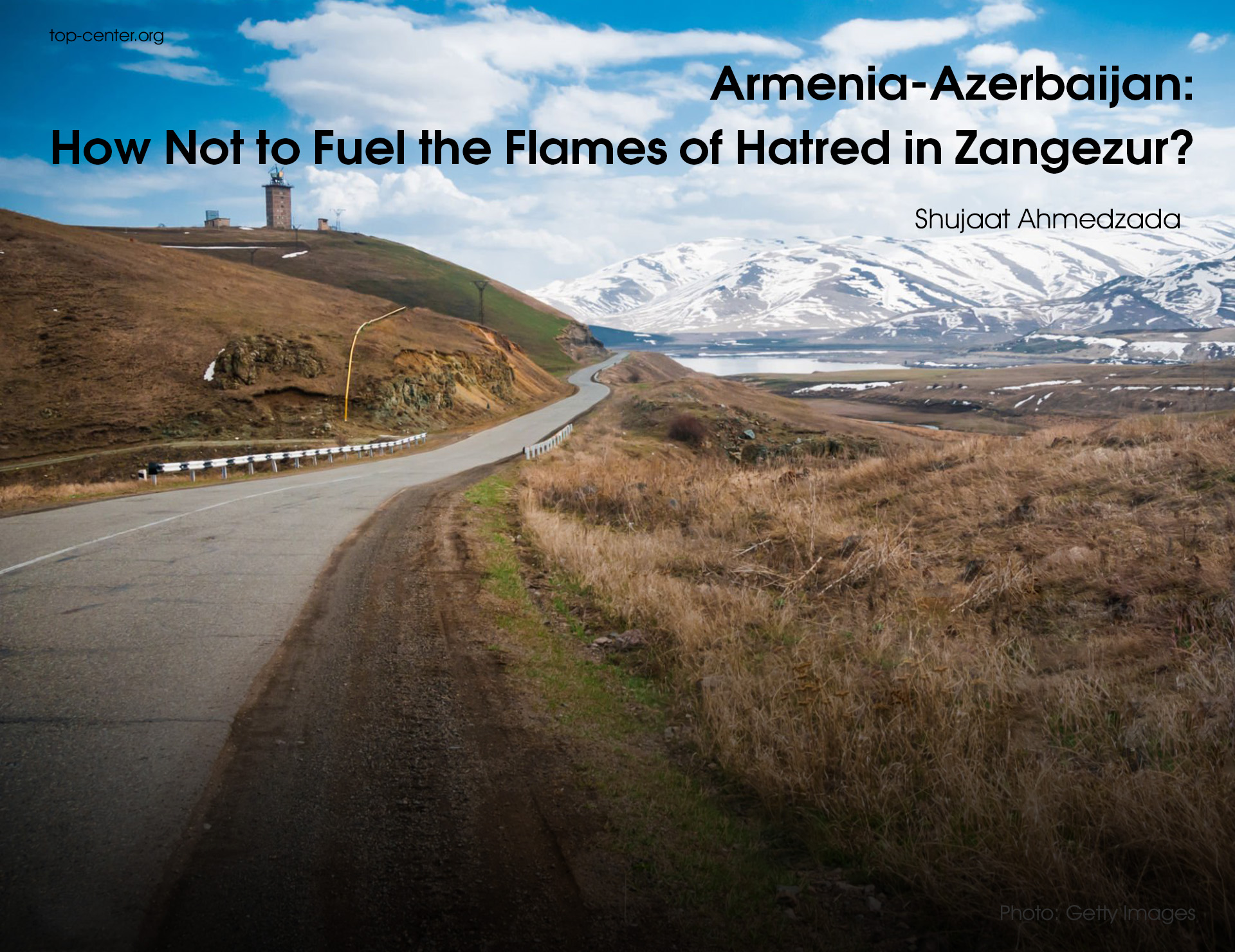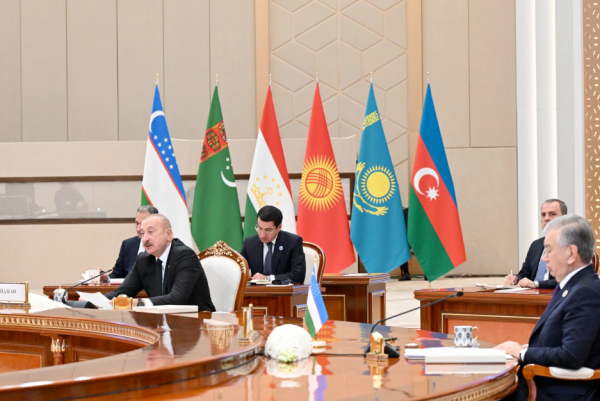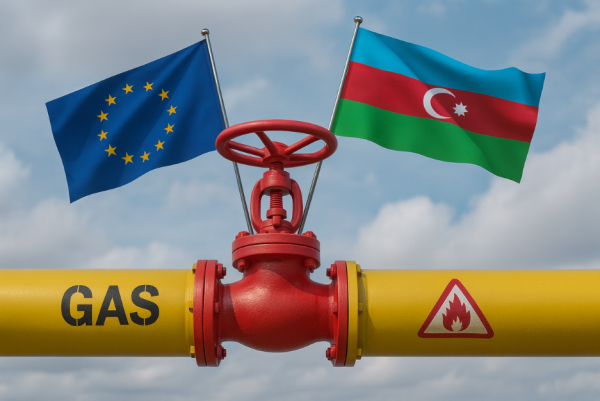Armenia-Azerbaijan: How Not to Fuel the Flames of Hatred in Zangezur?

Residents of Verin Shorzha village awoke to the sound of intense artillery shelling on the night of September 12. These sounds signaled the largest military escalation between Armenia and Azerbaijan since the end of the Second Karabakh War. According to reports, artillery strikes reached targets up to 40 km inside Armenia. More than 200 people were killed from both sides, whereas hundreds more were wounded.
Putting aside the latest Armenia-Azerbaijani border escalation for a minute, let’s continue on Verin Shorzha. This mountainous village has a stunning view of alpine meadows. A snow-capped mountain range separates it from the Kalbajar district of Azerbaijan. Despite the stunning scenery in both Verin Shorzha and the neighboring Nerkin Shorzha, most of the houses there are in ruins. Google Maps shows it clear that Nerkin Shorzha only has 25–30 buildings with roofs, and most of the community is made up of demolished houses.
One can see similar scenes on the road from Nerkin Shorzha in Gegharkunik to Nrnadzor in Syunik. Houses with missing roofs, excessive grass growth, and inaccessible locations. But why are there so many ruins? Were these settlements wiped out by a natural disaster? Were there active battles?......"No" is the response to these queries. There is a single explanation for the current state of Nerkin Shorzha (former Yukhari Shorja), Nrnadzor (former Nuvadi), Tanahat (former Jomardly), and numerous other communities. These villages are in ruins because the former residents were forced to leave their homes. And the former residents were Azerbaijanis and Kurds of Armenia.
Armenia was the homeland of both Armenians and Azerbaijanis prior to the start of the Nagorno-Karabakh conflict. Azerbaijanis, who lived in Shirak, in the Ararat valley, in the foothills around Lake Sevan, in the mountainous villages of Syunik, sometimes compactly, and sometimes together with their Armenian neighbors, had always made a great contribution to the economy of Soviet Armenia. Azerbaijanis had such an irreplaceable role that even some Armenian politicians intervened to save some Azerbaijani villages from being deported to Soviet Azerbaijan during the deportation of 1948–1952.
Armenians of Azerbaijan played no less role in the socio-cultural life of Soviet Azerbaijan. Since the rate of urbanization among Azerbaijan's Armenian community was higher than Azerbaijanis living in Armenia, the former took a more active part in the political administration. Armenians of Azerbaijan had historical settlements in Shirvan, Ganja, Karabakh, and Nakhchivan in addition to living in major cities like Baku and Sumgait. Alexander Shirvanshzade, an Armenian from Shamakhi, was the first people's writer in Soviet Azerbaijan, which demonstrates the vital role that the Armenian community played in Soviet Azerbaijan's socio-cultural life.
Since the end of the 1980s, with the flare-up of the conflict in Karabakh, the sparks of ethnic hatred quickly engulfed entire Armenia and Azerbaijan. The reverberations of the blood feud that started on the road from Aghdam to Askeran began to be heard in Sumgait, Ganja, Baku, Ghapan, Spitak, and Gugark. One of the most violent population transfers in recent history took place between Armenia and Azerbaijan in 1988-1991. In a short amount of time, more than 500,000 people were uprooted from their homes; thus, more than 250, 000 Azerbaijanis had to leave Armenia and close to 350,000 Armenians were forced to leave Azerbaijan.
Perhaps, Zangezur – also known as Syunik – is the best example of how quickly and bloodily the ethno-demographic landscape of the South Caucasus may change. The Christian (Armenian) population of Syunik, which is home to beautiful architectural landmarks like the remnant of the tenth-century Tatev Monastery, has undergone a distinctive historical evolution path. At a time when Armenian statehood was in decline, the Armenian identity of Zangezur was able to preserve itself in the form of small feudal principalities. The Ottoman-Safavid wars of the Middle Ages had a negative effect on the region’s demographics and resulted in a large-scale exodus of people. The imperial archives mention 240 Muslim and 81 Armenian villages in Zangezurskiy uyezd when examining the Muslim (Azerbaijanis and Kurds) population of the region, which came under Russian rule in the 19th century. A certain degree of stability brought by Russian rule was upended when dark clouds began to loom over Zangezur. The inter-ethnic conflicts in 1905-1907 and 1918-1920 altered Zangezur’s demographic landscape at an unprecedented level.
Drawing the boundaries of nation-states for Armenians, Azerbaijanis, and Georgians was the toughest issue that Bolsheviks faced when Soviet rule was formed in the South Caucasus. The task of the Armenian and Azerbaijani Bolsheviks was quite challenging. Muslims made up a sizable portion of the population in Erivan (now Yerevan). In Baku, however, Muslims were a minority. On the other hand, Armenians made up the majority of the population of Tiflis (now Tbilisi). In addition to the challenging demographic landscape, Armenia and Azerbaijan had conflicting positions over three regions: the mountainous parts of Karabakh, Zangezur, and Nakhchivan. By establishing ethno-territorial autonomy within Soviet Azerbaijan, the dispute over Karabakh was settled. Nakhchivan was transformed into an autonomous republic with the close involvement of Kemalist Turkey in 1921. The Bolsheviks adopted an entirely different approach in the case of Zangezur: the eastern portions of the Zangezurskiy uyezd, where the majority of the population was Muslim (today's Lachin, Gubadli, and Zangilan raions of Azerbaijan), were attached to Soviet Azerbaijan while the remaining territory (today's Syunik marz of Armenia) remained under the control of Soviet Armenia.
One hundred years later, Armenia and Azerbaijan still have conflicting positions over Syunik, albeit in a quite different way. The main source of this disagreement is Article 9 of the trilateral ceasefire statement that put an end to the Second Karabakh War in 2020. Armenia has committed to ensuring unimpeded communication between the western districts of Azerbaijan and Nakhchivan based on this article. Azerbaijan uses the term “Zangezur Corridor” when interpreting this clause. According to Armenia, however, there is only one corridor, and it is the Lachin Corridor connecting Armenian-populated parts of Karabakh with Armenia. Long story short, the parties find it challenging to respond to the following two questions: 1) Under whose sovereignty will this road be? 2) How will the connection be provided on this road?
Both Yerevan and Baku have convincing arguments. Indeed, the statement does not mention the "Zangezur Corridor." A closer inspection, however, reveals that this is not going to be an ordinary road. First, the paragraph has a specific goal - to connect the west of Azerbaijan with Nakhchivan. Second, it is written that this connection should be uninterrupted, and Armenia has to guarantee the safety of the movement. Third, it is said that a third party – Russia - will have a presence in this connection. These three factors alone set this road apart from the opening of regional communication lines, or, in Baku's words, these three factors turn this road into a "corridor."
The messages that the term "corridor" sends have probably something to do with why there is such a raging argument about terminology. The road "connecting Azerbaijan with Nakhchivan" is not the term that Baku uses. Instead, Baku explicitly and openly resurrects the name of Zangezur, a historical region and a 19th-century administrative subdivision of the Russian Empire. Two messages from Baku in the years following the war also changed the course of the argument. First was the establishment of the "East Zangezur Economic Region," which has no functional value in the regional administration of Azerbaijan. It would follow that if the "East Zangezur" exists, there should also be a western one, which points towards Syunik. Second, the Azerbaijani government started advocating for the return of Azerbaijanis to Armenia more often. The establishment of the "Goycha-Zangazur Republic" covering more than half of Armenia went viral on social media, even though the Azerbaijani authorities quickly disavowed this project. Long story short, for Yerevan, the “Zangezur Corridor” resonates more than just a road.
"If Armenia does not recognize the territorial integrity of Azerbaijan, Azerbaijan will not recognize the territorial integrity of Armenia either", said Baku. Even though this remark may sound somehow irridentist, Baku's "territorial claims" have not yet become a reality. Except for the military incursions that began in May 2021, the annexation and invasion of Syunik by Azerbaijan sound implausible for three reasons. First of all, Azerbaijan will violate every single norm and principle of international law by doing this. The legal basis for Azerbaijani "claims" to Syunik does not exist. Second, no state will recognize Azerbaijan's legitimacy over Syunik, even if it manages to militarily occupy Syunik. The recognition of the occupant's sovereignty over the occupied areas has never taken place in the post-WW2 system of international relations. For the same reason, the international community did not recognize Armenia's occupation of Karabakh. Thirdly, and most importantly, Azerbaijan's offensive on Syunik may lead Baku into a direct military conflict with Russia and Iran, Armenia's two most vital strategic allies. Both Moscow and Tehran made it clear that they would intervene militarily to protect Armenia’s territorial integrity. Not only is Azerbaijan incapable of withstanding such a military confrontation but taking such a step would also be suicide for the country's very existence.
Many factors point to the likelihood of a new escalation between Armenia and Azerbaijan. But with a little bit of creative thinking, political will, and vision, Syunik can be transformed into an area of cooperation. Peace only functions when it is put into practice as a functional mechanism, not when it is abstract. Both the road connecting Armenia with the Armenian-populated regions of Karabakh and the route connecting the west of Azerbaijan with Nakhchivan has significant potential for making peace. That is why the opening of these two roads has always been discussed in many peace talks since 1994. Even though the road to Nakhchivan was only a secondary issue during negotiations until 2020, it is still worth mentioning that it was these two roads that brought parties closer to a peace deal in the Key West talks in 2001.
In a nutshell, roads have the power to make the peace. The car leaving Yerevan and entering Stepanakert without any barriers is a symbol of peace. So, is the Azerbaijani car using Armenian proper to reach Nakhchivan. At the negotiations table, when the idea of opening these two routes was brought up by the international mediators, their intention was not to undermine the sovereignty of the two countries but rather to make Armenia and Azerbaijan somehow dependent on each other. Syunik is Armenia, and Lachin is Azerbaijan. Discussing the peace potential of these two regions does not affect their legal status in one way or another. To keep the road to Stepanakert open, Yerevan will prioritize dialogue with Baku, and to keep the road to Nakhchivan open, Baku will prioritize talking with Yerevan. Many have appreciated the role of inter-dependence in peace-making; 18th-century German philosopher Immanuel Kant, and Robert Schuman who proposed the establishment of the European Coal and Steel Community were two prominent proponents of making peace with inter-dependence.
With some creative thinking, it is possible to prevent dark clouds from hovering over Zangezur again and turn the region into a model of successful dispute resolution in the history textbooks. Here are some of the ideas that I propose:
1. A road along the Aras River will be constructed with funding from international donors in a way not to interfere with the transportation connections between Armenia and Iran. For safety reasons, this route will be covered with fencing. Azerbaijani vehicles using this road will be prohibited from entering other territories of Armenia and stopping on the road unless emergency. It will be forbidden to transport any military cargo on this road. At the entry and departure of this route, vehicles will be registered either by a third party or by automated systems. The Joint Armenia-Azerbaijan Liaison Office will function near the road to prevent any accidents.
2. It is also possible to fence off the newly constructed Lachin corridor in Karabakh for security reasons. It should also be forbidden to move soldiers and military equipment on that road. Using the same reasoning, a joint operating center can be established to prevent any incidents. Additionally, the registration of vehicles at the road's entrance and exit should be handled either by a third party or by automated systems.
3. As for the security guarantees, Azerbaijan assures the security of the road through Lachin, and Armenia promises the security of the road leading to Nakhchivan. The Russian side would act as the third party in both Lachin and Meghri, but in different ways, according to the tripartite statement. Although it is theoretically conceivable for Russia to be present in Lachin, and the southern portion of Syunik at the moment, the parties can work on new procedures in the future, for instance by considering the European Union's experience in this field (see: the role of the EU in the Israeli-Palestinian border crossings).
4. Geographical difficulties prevent Nakhchivan and Syunik from developing economically. Therefore, the establishment of the "Nakhchivan-Syunik Free Economic Zone" in the future may bring Armenia and Azerbaijan closer to each other. While Nakhchivan may get its water from Armenia, Syunik can get its energy from Azerbaijan. The parties can work to turn these two areas into regional trade hubs as a part of the international commerce routes that run from Beijing to London. By constructing new energy lines that will connect the energy fields of Caspian Basin with Europe through Syunik, Azerbaijan may cut down on travel time, and Armenia can benefit financially from the transfer costs.
5. The complete return of Azerbaijani refugees to Armenia and Armenian refugees to Azerbaijan is still a long way off. Due to this, tourists from Azerbaijan visiting Nerkin Shorzha (Yukhari Shorja) and tourists from Armenia visiting Aghjakend (Shahumyan) can be regarded as the best alternative in the near future. Cemeteries are significant to Azerbaijanis and Armenians alike. The most significant and fundamental confidence-building mechanism can be activated by the religious institutions of both countries. The Administration of Caucasian Muslims can open a representation office in Armenia and can work to preserve the Muslim cemeteries on the territory of Armenia and even arrange regular visits there. Whereas the Armenian Apostolic Church can be responsible for the Armenian cemeteries on the territory of Azerbaijan by opening a similar representation in Baku.
My goal in writing this is not to promote these answers as the sole viable ones, but rather to discuss these models and help foster constructive and hate-free debates in the Armenian and Azerbaijani societies. Armenia and Azerbaijan can solve EVERY single problem that they have. It just requires a certain degree of vision and creativity.







